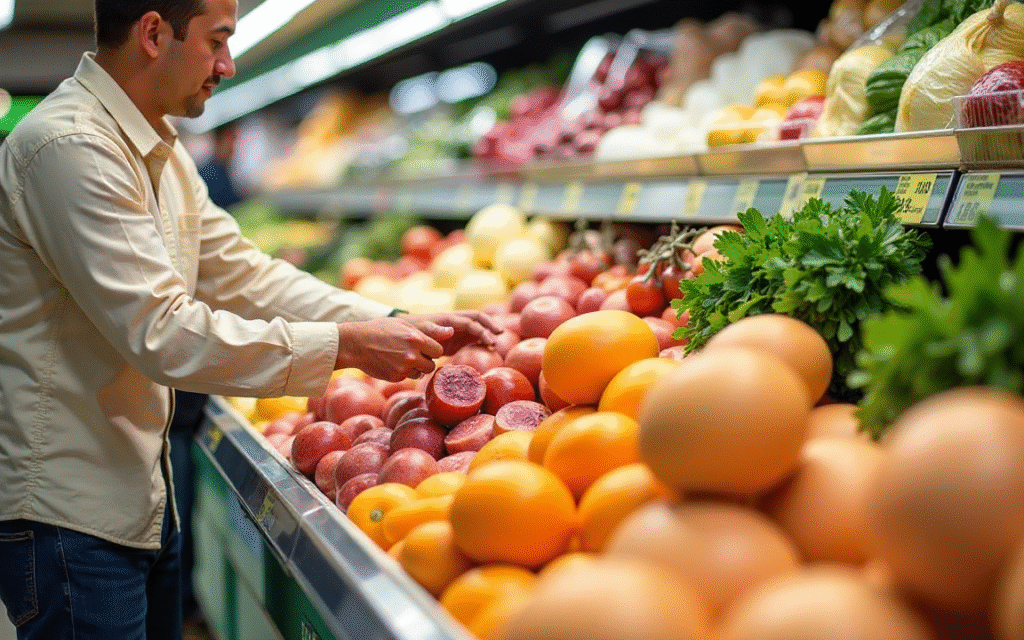
The United Nations’ Food and Agriculture Organization reported on Friday that global food commodity prices rose in April.
This increase was fueled by higher prices for cereals, meat, and dairy products, which offset decreases in the prices of sugar and vegetable oils.
The FAO Food Price Index averaged 128.3 points in April, a 1% increase from the revised March figure of 127.1 points.
This index monitors the monthly fluctuations in the prices of a selection of globally traded food commodities.
In April, the reading increased by 7.6% compared to the previous year. However, it was still 19.9% lower than the peak in March 2022, which occurred after Russia’s full-scale invasion of Ukraine.
Cereal prices
The FAO’s cereal price index saw a 1.2% increase from March.
This rise in cereal prices was driven by several factors: wheat prices experienced a slight rise due to Russia’s reduced exports, rice prices increased because of higher demand, and corn stocks in the United States became tighter.
“However, trade policy developments and macroeconomic uncertainty limited the rise,” FAO said.
Although cereal prices increased in April, the index remained 0.5% lower than the previous year.
Meat prices
The FAO’s meat price index saw a 3.2% increase last month, contributing to rising food prices overall.
This rise was primarily driven by higher pig meat prices, coupled with strong import demand for bovine meat.
The meat price index averaged 121.6 points in April, up 3.7 points from March and 5.0 points higher than the year-ago period.
Global meat prices have increased across the board, with pork experiencing the largest surge.
FAO said:
The rise was underpinned by higher quotations in the European Union due to stronger global import demand, following the reinstatement of Germany’s foot-and-mouth disease-free status and the lifting of related restrictions by importers, further bolstered by increased seasonal demand associated with Easter holidays.
Poultry meat prices experienced a moderate increase, particularly in Brazil.
This rise was driven by strong international demand and reduced processing capacity due to festivities, which limited available exports and consequently pushed prices upward.

Dairy prices
The dairy price index saw a 2.4% increase in April, marking a significant 22.9% surge compared to the previous year.
The jump in dairy price was largely driven by record-high butter prices, attributed to decreasing inventory levels across Europe.
FAO added:
The surge was largely driven by higher European prices supported by reduced inventories and strong milkfat demand, despite seasonally higher milk production.
Vegetable and sugar prices fall
By contrast, FAO’s vegetable price index decreased by 2.3% in the past month, primarily driven by a significant reduction in palm oil prices.
Simultaneously, the sugar price index experienced a 3.5% decline due to concerns surrounding the ambiguous global economic future.
The decline in global sugar prices was exacerbated by Brazil’s higher-than-anticipated sugar production in the latter half of March.
This downward pressure was compounded by the weakening of the Brazilian real relative to the US dollar, as well as a decrease in international crude oil prices.
Meanwhile, the FAO’s latest cereal report maintains its projection for global wheat production in 2025 at 795 million metric tons, which is consistent with the 2024 output.
Global cereal production for 2024 is now estimated at 2.848 billion tons, a slight downward revision from the previous estimate of 2.849 billion tons by the agency.
The post Global food prices climb in April: which staples are driving the surge? appeared first on Invezz
https://invezz.com/news/2025/05/02/global-food-prices-climb-in-april-which-staples-are-driving-the-surge/


